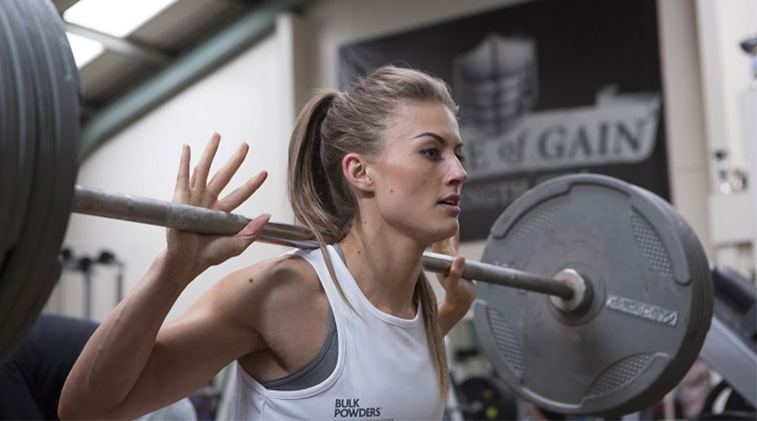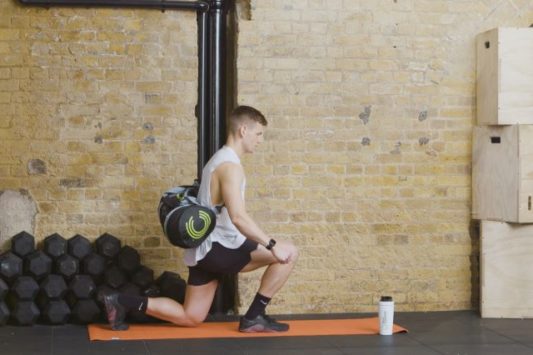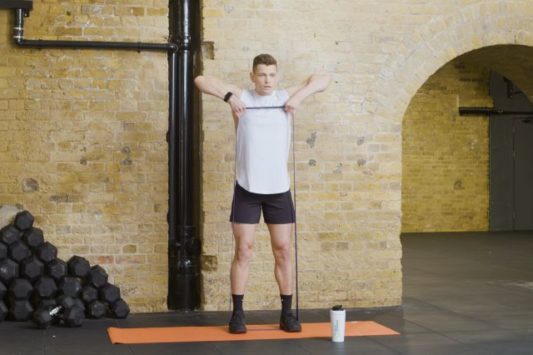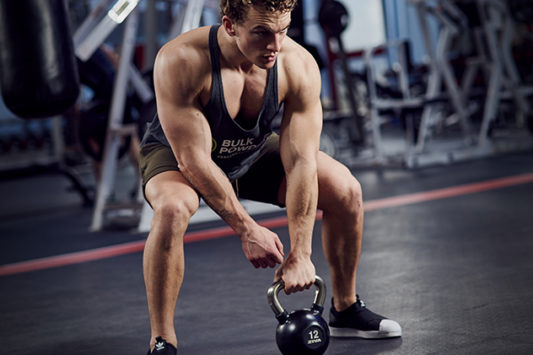Everyone squats, from beginners to pros and power lifters. Here’s how to make squats work for you.
There’s a reason you’ll find squats in any solid training programme. They build strength, muscle mass, power, and can even help you burn more body fat. Squats shape your quads, build your glutes, and beef up your hamstrings. Squats have even made their way into memes and onto t-shirts.
But do all of us need to do the traditional barbell back squat to claim #squatsquad status? What should you do if back squats are painful or awkward? And what’s the best way to start squatting if you’re new to the barbell game?
The truth is, barbell back squats might be a classic exercise, but unless you’re a competitive powerlifter then nobody is ever going to insist that you do them. Sure, barbell back squats might be considered the best form of squat for muscular development, mass, and shape. But some people simply can’t do a back squat properly, and would be better off spending their time on a type of squat they get on with.
5 REASONS YOU MIGHT STRUGGLE TO SQUAT
1) TIGHT ANKLES
If you have a problem with ankle flexion, or a tight Achilles tendon, you will not be able to squat very deep in a traditional back squat. Try loosening and stretching your ankles for greater mobility – but this will take time.
2) TIGHT UPPER BODY
If you’re tight in the shoulders, wrists, or chest, your ability to hold a bar across your back and keep an upright posture will be compromised. Work on stretching and loosening up those areas, and experiment with a high bar or low bar squat style.
3) BACK PAIN
If you have persistent pain or injury in your lower back or thoracic spine, holding a loaded bar across your upper back might be a major problem (and choosing an alternative squat variation might be the best way to go).
4) LACK OF CONFIDENCE
Walking out of the rack with a heavy bar across your shoulders takes a lot of confidence (and so it should!). If you don’t feel confident in your technique, in your ability to squat that weight on that day, or if you don’t trust the equipment then your squat will suffer.
5) NO SPOTTER
If you are training alone and your squat rack doesn’t have good safeties, or there’s no decent spotter around to help you, you might feel uneasy about back squats.
7 SQUAT VARIATIONS YOU NEED TO TRY
1) FRONT SQUAT: TARGETS YOUR QUADS, CORE, AND UPPER BACK.
A front squat is done with the bar in front of you, across your shoulders, instead of behind you on your upper back. You will probably need to lower the pins one or two holes from where you’d have it for a back squat. Start by taking hold of the bar, either with a “clean grip” (fingers under the bar, palms facing upwards) or a crossed-hands grip (cross your arms under the bar). Whatever grip you use, be sure to keep your elbows HIGH as this will keep the bar safely in place. Walk out just like you would in a back squat. Squat down and power up – it’s the same move as a back squat, but you will naturally have a more upright body position with your chest high and your back straighter.
2) ZERCHER SQUAT: TARGETS YOUR CORE AND UPPER BACK AS WELL AS YOUR LEGS.
This is a good choice if you don’t want to load your upper body. With a Zercher squat, you hold the bar in the crook of your elbows with your arms bent up like a biceps curl. Keep the weight pretty light at first, because the inside of your elbows won’t be used to the pressure. Start with the bar set up just below chest height, hook your elbows under so the bar is in the crook of your elbows, step back and squat. Squat so your elbows go between your knees or until the bar touches your quads.
3) HACK SQUAT: TARGETS YOUR QUADS
Most people know about the hack squat machine, but did you know that the hack squat was originally a barbell exercise? Here’s how to do it (you’re going to want to start really light!). Put the barbell on the floor and stand right in front of it (with your back to it). Have your feet flat, or raise your heels on a couple of small plates. Squat down and reach behind you for the barbell (overhand grip). Stand up with the bar – it will travel up the back of your legs. Of course, you can also use the hack squat machine! (But I challenge you to try a barbell hack squat at least once!).
4) PIN SQUAT: FOR TRAINING SHEER STRENGTH AND HONEST SQUAT DEPTH
Also called an Anderson Squat, this kind of squat starts from the bottom of the move so you can’t rely on momentum. Set up the bar in a rack, on the safety pins which are at the height of the bottom of your squat. Then start from this position – and pause each rep back at the bottom so you start from a “dead” stop.
5) BOX SQUAT: FOR BUILDING POWER
A box squat is usually done with a barbell across your back, but you can do it for any squat variation. Set up a box (or any solid surface) a few steps behind the bar. Make sure it is at parallel (you might need to add a couple of plates to make it the right height). Squat as normal but be sure to sit back on to the box, don’t just tap it with your butt! This creates a mini-pause which helps you build explosive power out of the “hole” (the bottom of the squat).
6) SAFETY BAR SQUAT: FOR UPPER BODY MOBILITY ISSUES
If your gym has a safety bar, give it a try. A safety bar sits on your upper back like a regular bar, but has handles which come down either side of your chest, so you don’t have to hold the bar behind your neck. A safety bar is also slightly heavier than a regular barbell, and feel different in terms of load and balance. It’s a great variation if you have a wrist, elbow, or shoulder injury or if you find it difficult to hold a barbell for a back squat.
7) GOBLET SQUAT: GREAT FOR BEGINNERS
A goblet squat is a great way to train basic squat patterns, or for doing high rep conditioning squats. Hold a kettlebell at your chest with both hands and keep it there as you do a body weight squat. Goblet squats remind you of proper squat form, remove load from your spine, and raise your heart rate.



